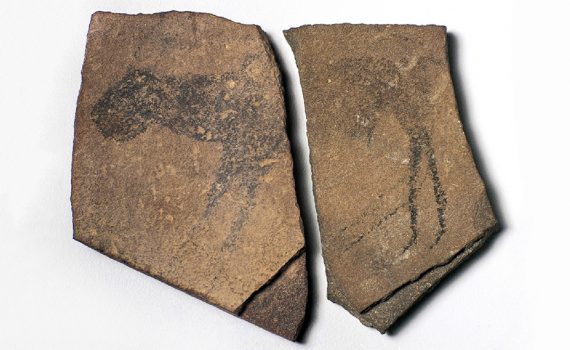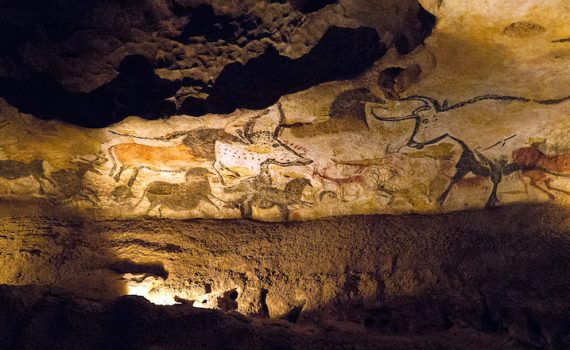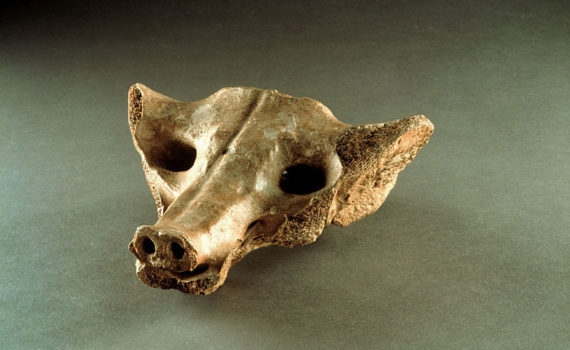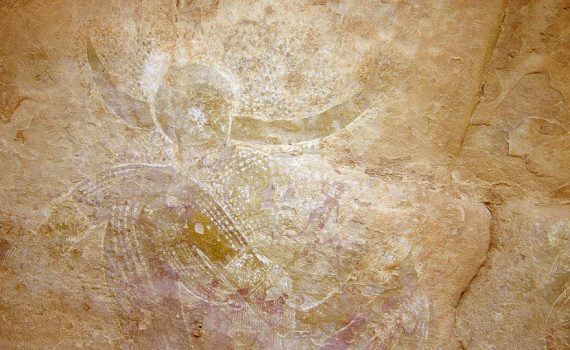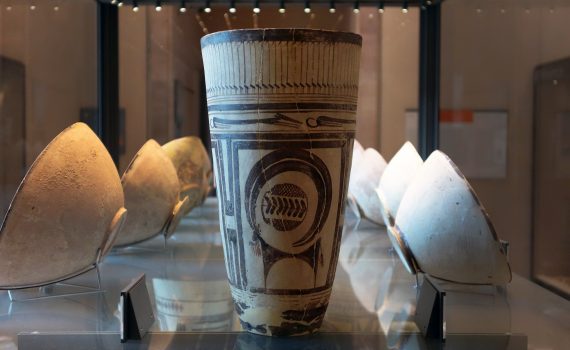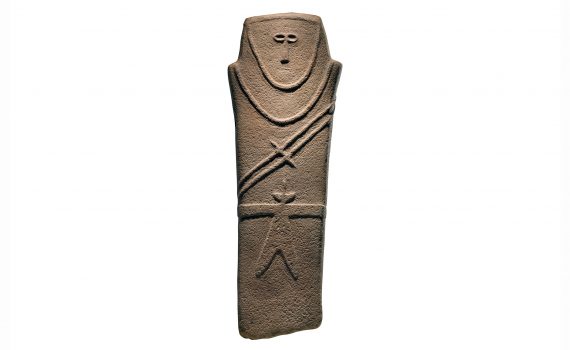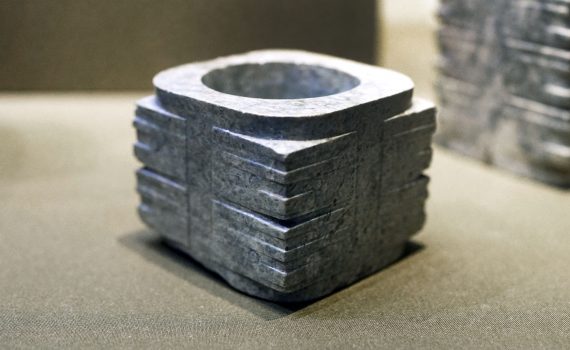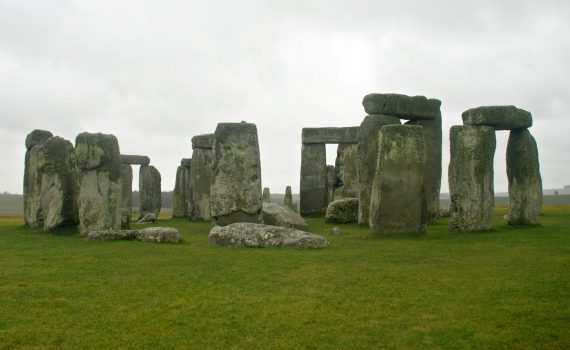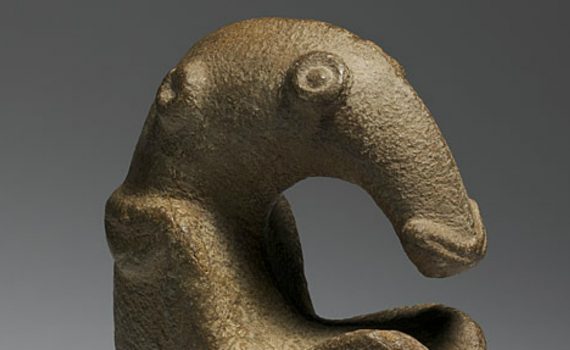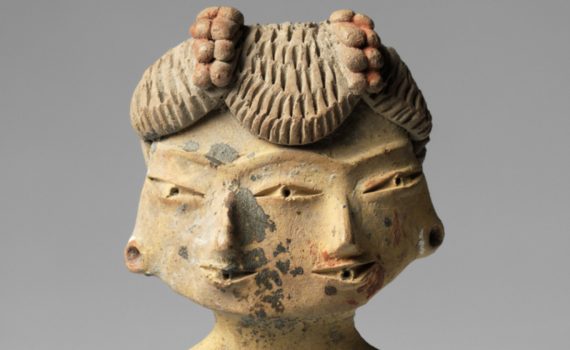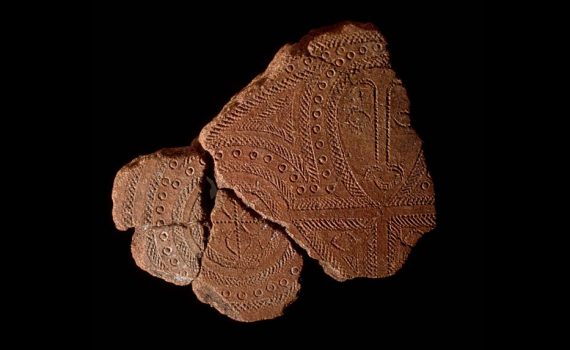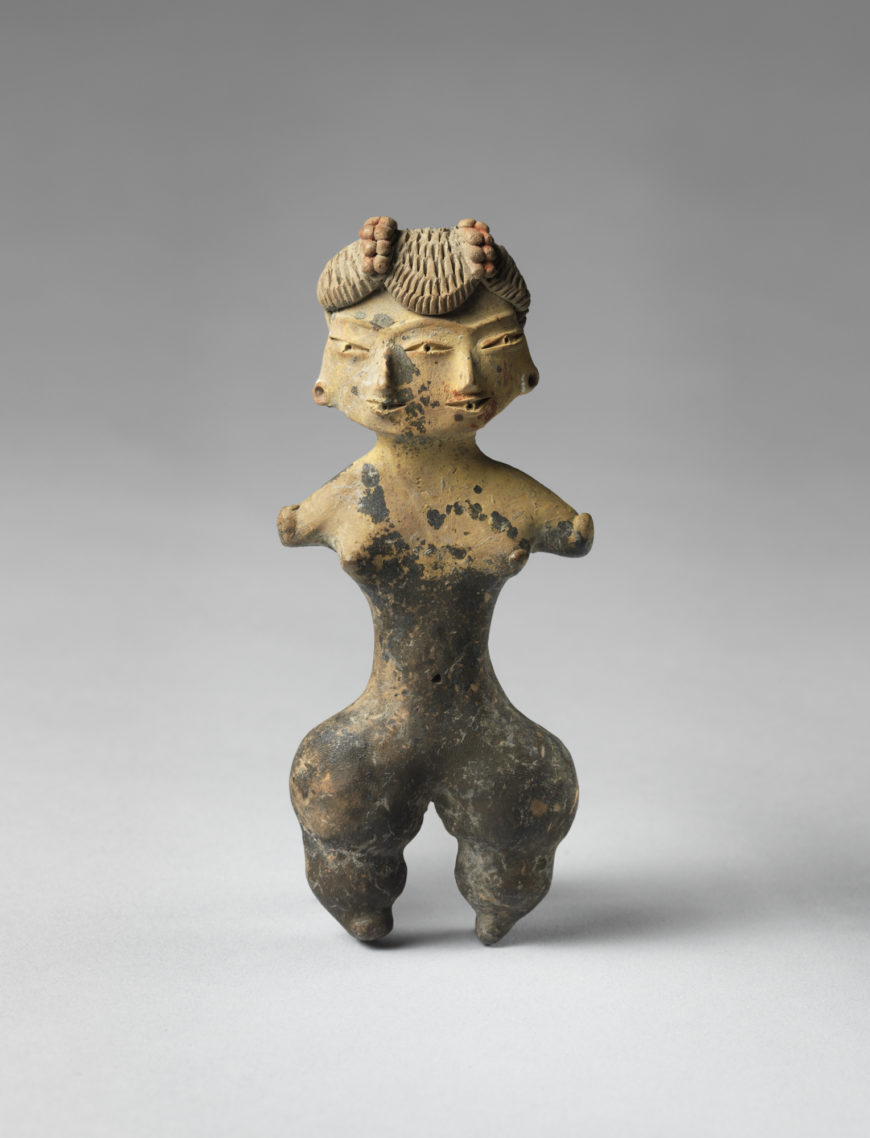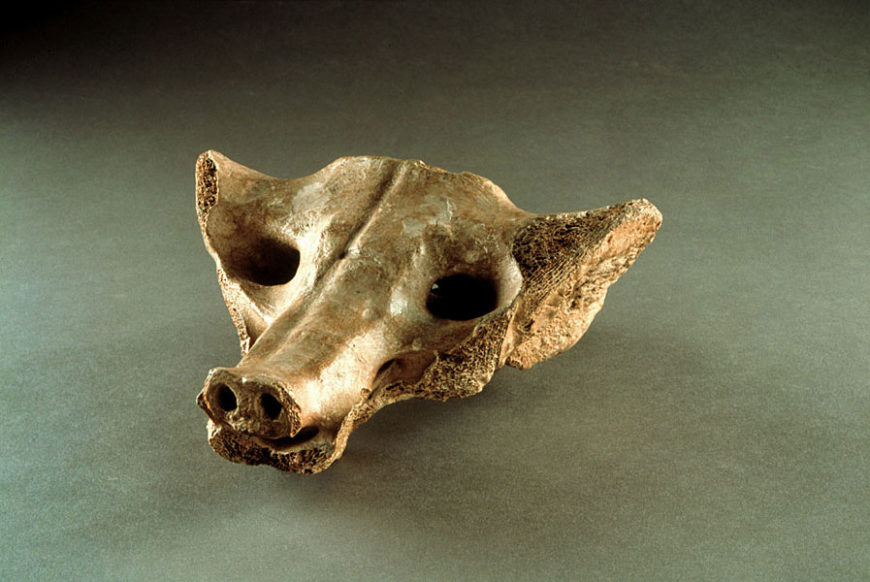Click on any icon to make it larger.
| anthropomorphic | human-like |
| art mobilier | small-scale prehistoric art that is moveable, such as the Apollo 11 Cave Stones
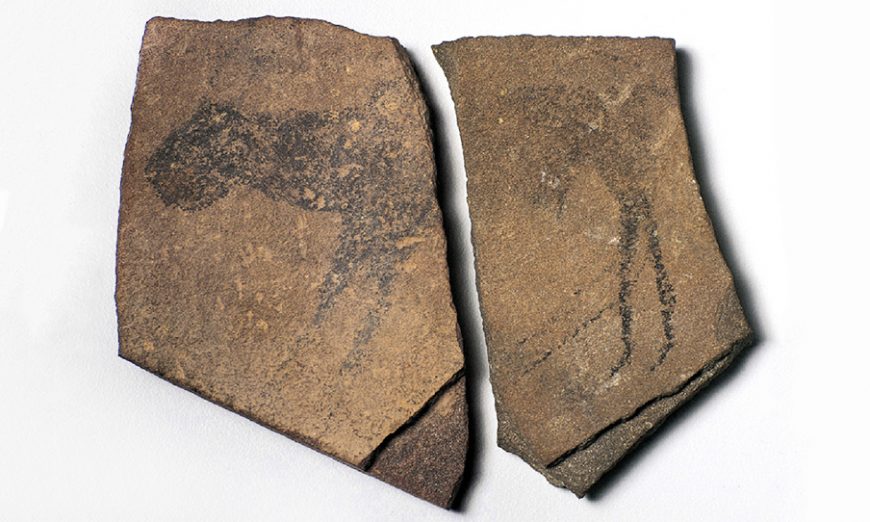 Apollo 11 Cave Stones, Namibia, c. 25,500–25,300 B.C.E |
| avian | something relating to birds |
| bicephalic | two-headed figures |
| Bovid | the Bovidae are the biological family of mammals that includes bison, African buffalo, water buffalo, antelopes, gazelles, sheep, goats, muskoxen, and domestic cattle |
| camelid | a member of the Camelidae family, such as camels, llamas, and alpacas |
| dentate | something that has a tooth-like or serrated edge |
| exogenous materials | materials that originated elsewhere |
| Hominids | a primate of family (Hominidae) that includes humans and their fossil ancestors, and also some great apes; humans evolved from an earlier specifics of hominids |
| Homo sapiens | anatomically modern humans who evolved from an earlier species of hominids |
| maize | also known as corn; first domesticated by Indigenous peoples in what is today Mexico c. 10,000 years ago |
| Melanesia | refers to a region of the western Pacific that includes the islands and island groups of Fiji, New Guinea, the Solomon Islands, and Vanuatu
|
| Mesoamerica | refers to the diverse civilizations that shared similar cultural characteristics in the geographic areas comprising the modern-day countries of Mexico, Guatemala, Honduras, Belize, El Salvador, Nicaragua, and Costa Rica |
| Micronesia | the region of the western Pacific referred to as Micronesia includes the Federated States of Micronesia, Guam, Kiribati, Mariana Islands, the Marshall Islands, Nauru, Palau, and Wake Island |
| Middle Stone Age | a period of African prehistory between the Early Stone Age and the Later Stone Age, generally considered to have begun around 280,000 years ago and ended around 50–25,000 years ago |
| mortars and pestles | a mortar is a bowl and pestle is an object used to grind against the sides of the mortar; they are commonly made of hard material such as stone and are often used to prepare food
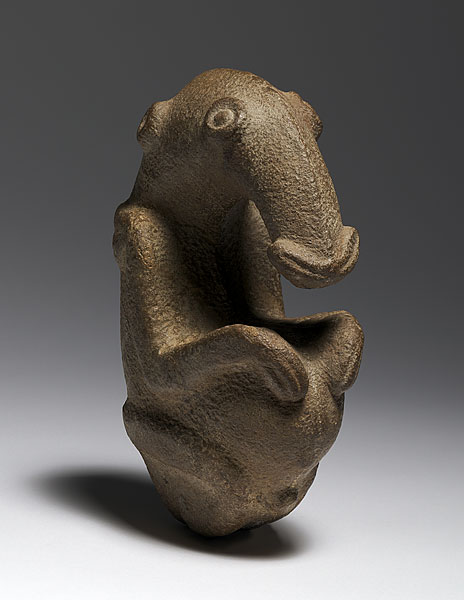 a pestle known as the Ambum Stone, c. 1500 B.C.E, Papua New Guinea |
| Neanderthals | an extinct species of humans named after the site in which their bones were first discovered—the Neander Valley in Germany; they existed between c. 120,000–35,000 years ago |
| Neolithic period | literally means “New Stone Age,” and dates from the 6th–4th millennium B.C.E. |
| Neolithic Revolution | dates to c. 10,00–3,000 B.C.E, and refers to when humans began to settle into communities, domesticate animals, and grow crops |
| nomad | an individual who roams about without a fixed residence |
| oryx | a large grazing antelope |
| paddle-and-anvil technique | a method of smoothing and finishing the walls of hand-made pottery; the anvil is held against the inner walls while a paddle is used to shape the outer surface |
| Paleolithic | literally means “Old Stone Age,” and dates from c. 2.5 millions years ago–10,000 B.C.E. It predates the Neolithic period |
| petroglyph | a rock engraving in which an image has been pecked or cut into the rock
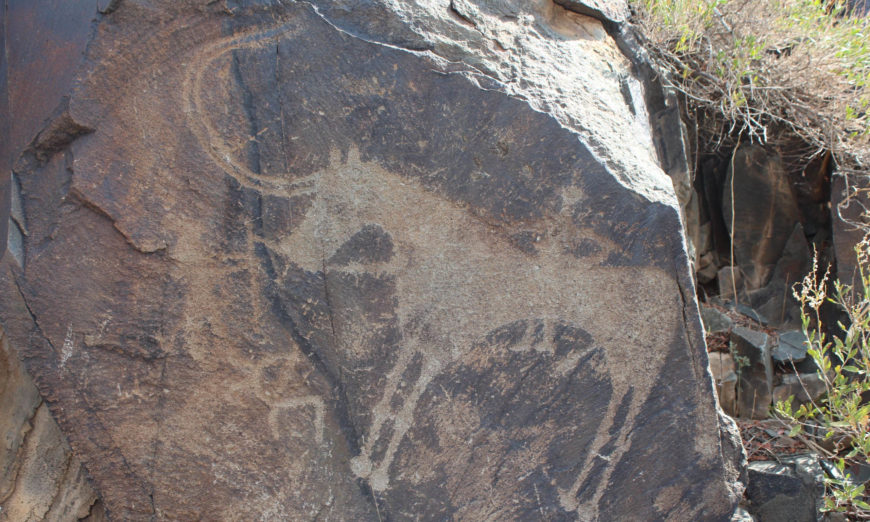 Petroglyph from Tamgaly Gorge, dating from the second half of the second millennium B.C.E.–20th century, Kazakhstan |
| Polynesian Triangle | stretches from Hawai’i in the north to Aotearoa (New Zealand) in the south, and Rapa Nui (Easter Island) in the east |
| potsherds | fragments of pottery |
| prehistoric | literally means before the invention of writing |
| sacrum | the large triangular bone at the base of the spine |
| shaman | a kind of priest or healer with powers involving the ability to communicate with spirits of other worlds |
| Shang Dynasty | the earliest Chinese dynasty verified by scholars, ruling from c. 1600–1050 B.C.E. |
| simting bilong tumbuna | literally translates as the “bones of the ancestors”; Enga term for a class of cult objects which were used as powerful ritual mechanisms where ancestors reside |
| slipped pottery | made up of tiny particles of clay suspended in water and can be colored with iron oxide or other minerals to decorate the surface of a pot |
| stele | a vertical stone monument or marker often inscribed with text or relief carving
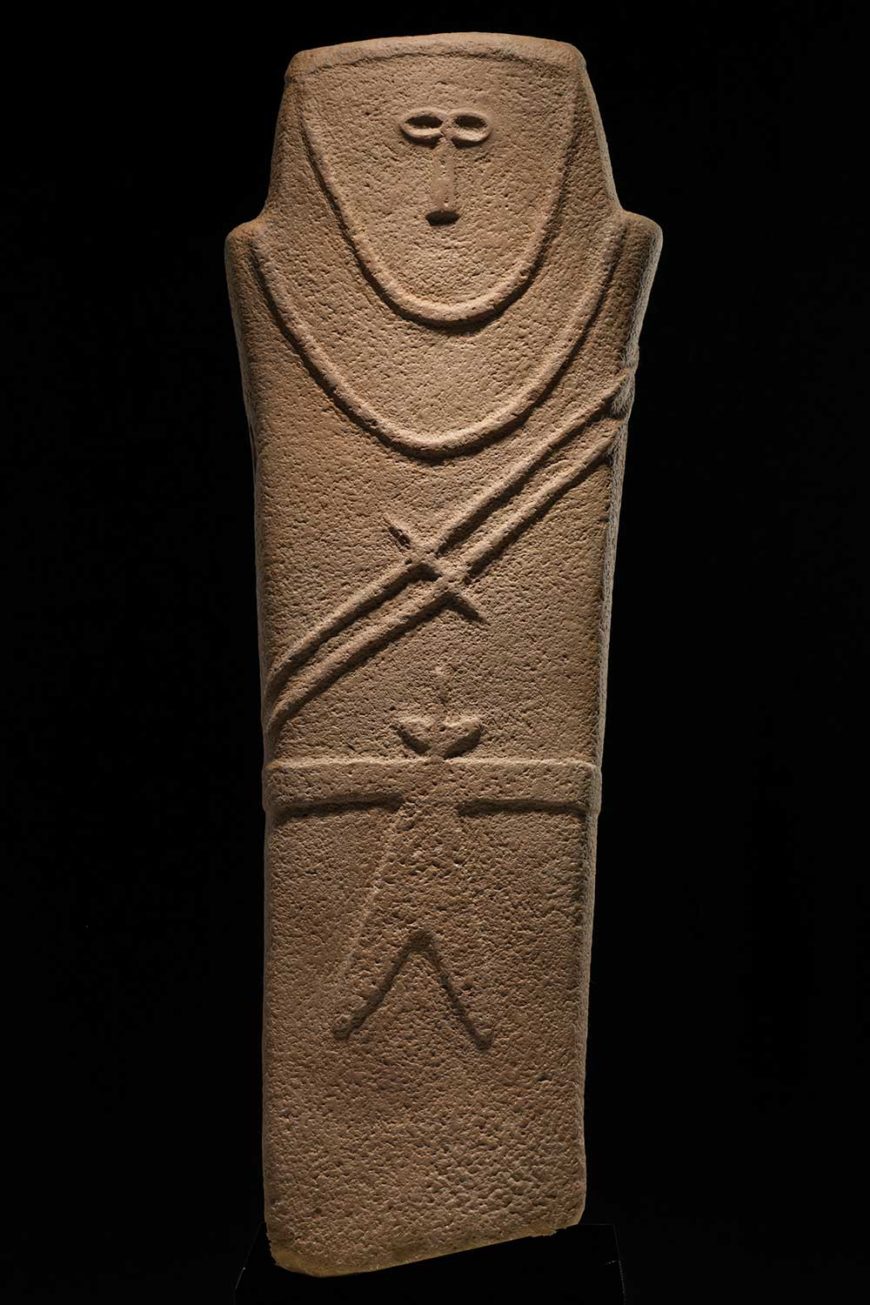 Anthropomorphic stele, Saudi Arabia, 4th millennium BCE |
| stratigraphic archaeology | the study of stratification, or layers deposited one atop another over time |
| temper | often sand or other added materials, temper reduces the elasticity of clay (how much it shrinks) and helps to avoid cracking during the firing process |
| Therianthrope | a supernatural creature that is part animal and part human |
| trilithon | a pair of upright stones with a lintel stone spanning their tops |
| twisted perspective | when animal bodies are depicted in profile while we see the horns from a more frontal viewpoint
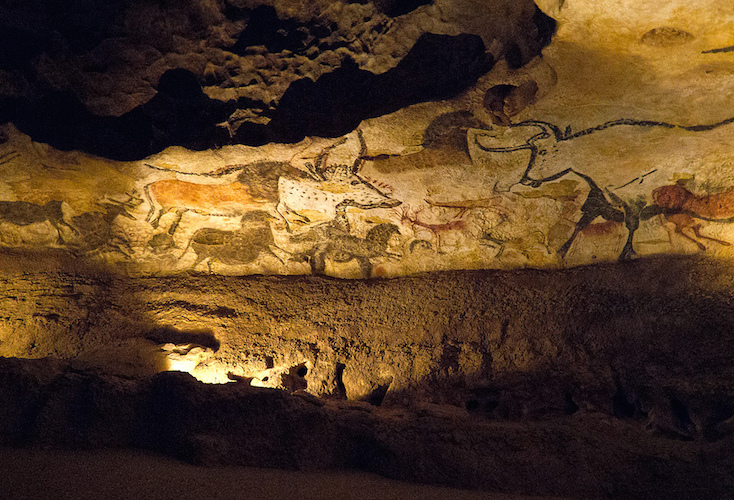 Left wall of the Hall of Bulls, Lascaux II (replica), original cave: c. 16,000-14,000 B.C.E. |
* Thank you to Nadia Scott for her help preparing this glossary.

